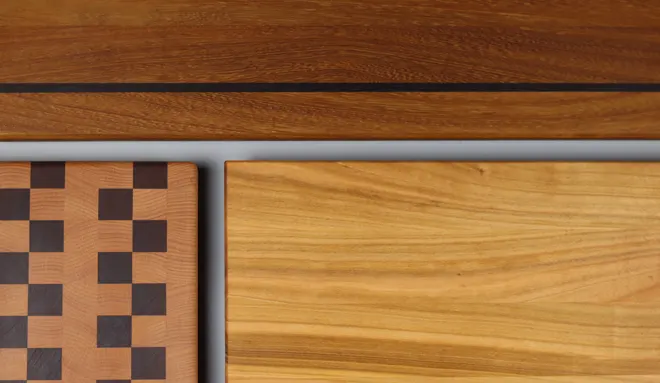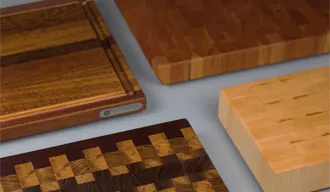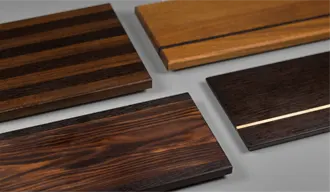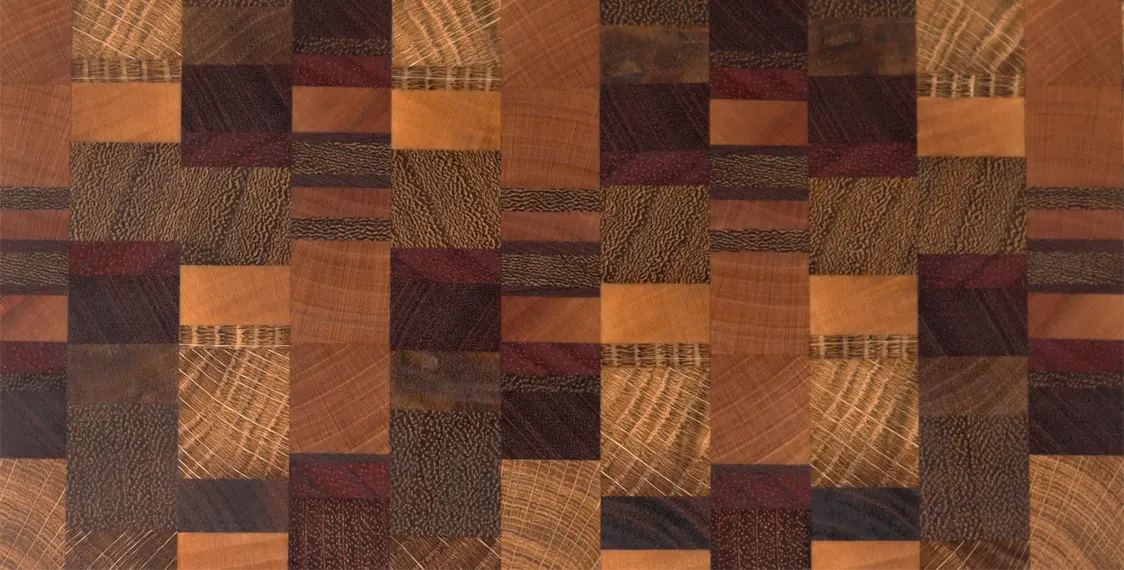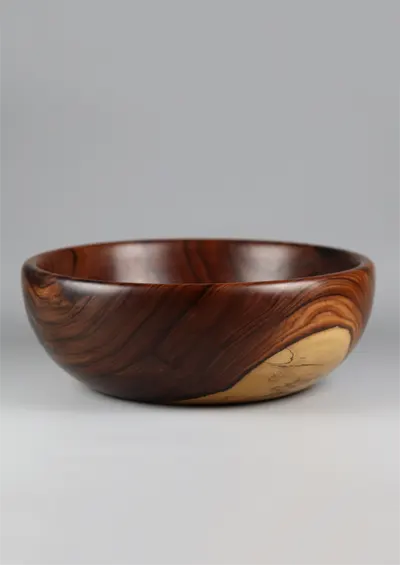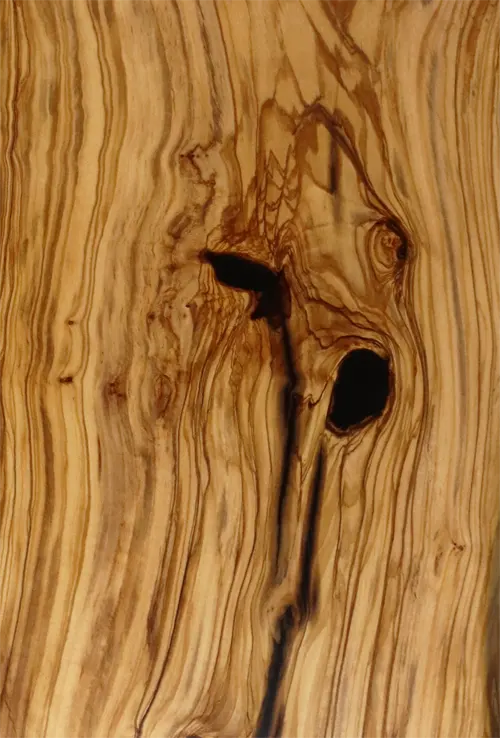What are tropical woods?
Tropical woods come from slow-growing trees that inhabit equatorial and subtropical regions, such as South America, Central Africa, and Southeast Asia.
Their growth in warm, humid climates, combined with their natural competition for light and water, gives them a dense and complex internal structure, with intertwined fibers, high mechanical strength, and remarkable durability against moisture and biological agents.
Unlike hardwoods (such as oak or walnut), tropical woods tend to have a more intense tone and striking grain, making them highly prized from an aesthetic point of view.
Technical properties of tropical woods
The following technical characteristics explain why tropical woods are ideal for intensively used kitchen accessories:
- High density: many species exceed 800 kg/m³, ensuring resistance to cutting and wear.
- Natural water repellency: their structure, rich in oils and tannins, gives them superior resistance to moisture.
- Biological resistance: high tolerance to fungi, insects and bacteria.
- Dimensional stability: they retain their structural properties in humid environments or with temperature changes.
- Distinctive aesthetics: reddish, deep brown or even violet colors, with marked veins.
These qualities make them ideal for cutting boards or presentation boards.
Tropical species most used in kitchen accessories
At Ligna, we select tropical woods with high technical performance and outstanding visual value. Below, we describe some of the most representative species and their practical applications:
1. Teak (Tectona grandis)
- Color: golden brown with dark veins.
- Properties: Water resistant, cut resistant, and with natural oils that prevent deterioration.
- Availability: Currently, the import of Burmese teak is prohibited due to human rights violations. The teak available predates the ban or comes from plantations, whose wood is of inferior quality.
- Applications: Ideal for cutting and serving boards in humid environments such as boats, coastal areas, or for very moist foods.
2. Iroko (Milicia excelsa)
- Color: honey brown that darkens over time.
- Properties: Similar to teak in durability but more affordable, resistant to fungi and insects.
- Applications: Excellent results on robust and elegant serving boards.
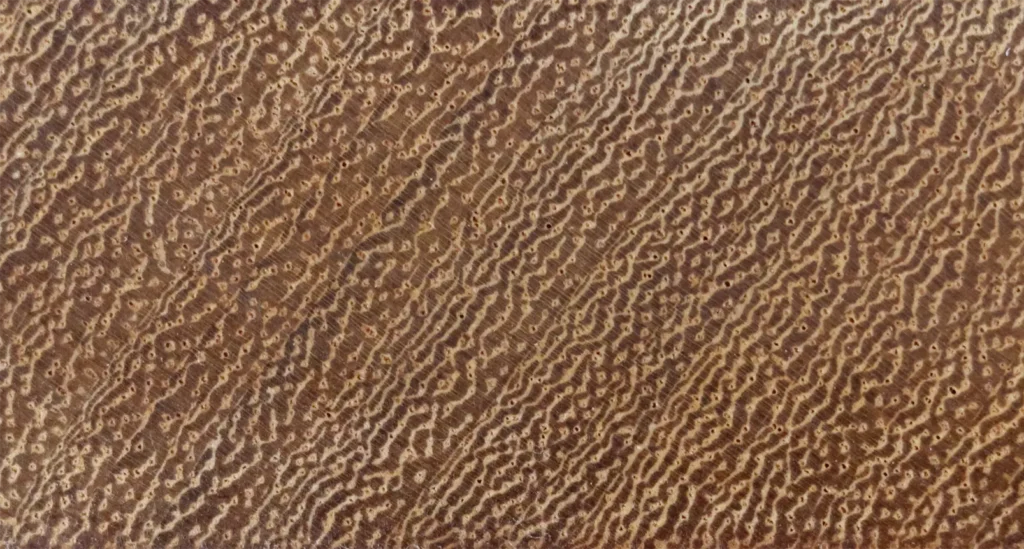
3. Jatoba (Hymenaea courbaril)
- Color: deep reddish brown.
- Properties: very dense, extremely hard, wear-resistant.
- Applications: Used primarily for kitchen accessories such as trays, as it withstands daily use.
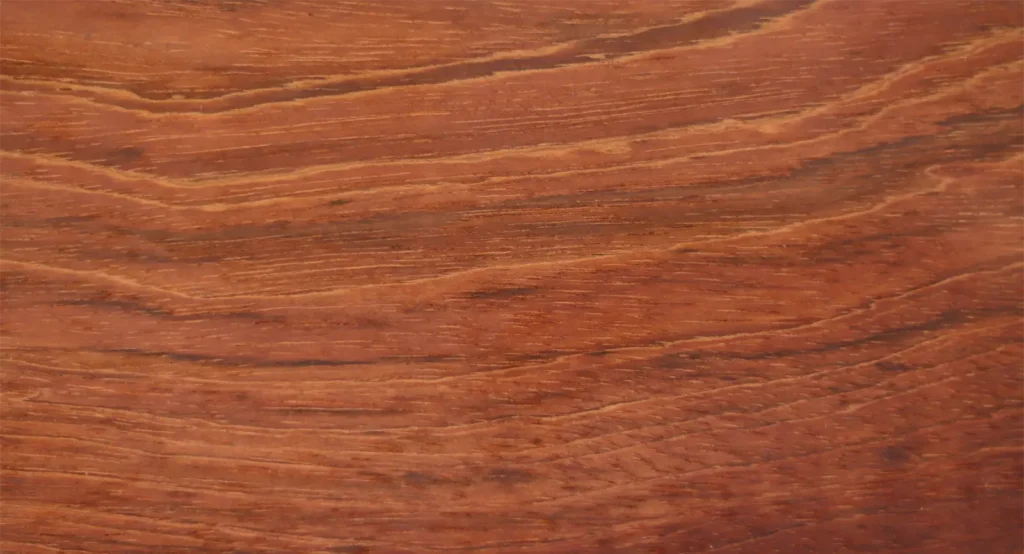
4. Padouk (Pterocarpus soyauxii)
- Color: bright red evolving into dark brown tones.
- Properties: very stable, with homogeneous texture and high resistance.
- Applications: used as a visual detail in combined or high-design pieces.
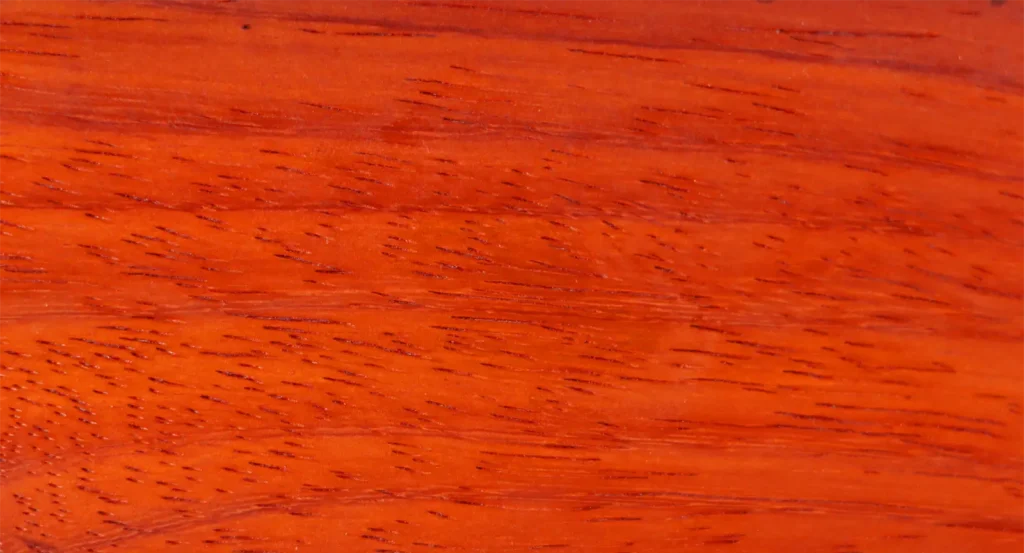
5. Bubinga (Guibourtia spp.)
- Color: Pink to reddish brown with dark veins.
- Properties: one of the hardest, with high density and water resistance.
- Availability: Low availability in recent years
- Applications: recommended for premium products due to their exotic appearance.

Advantages of tropical woods in kitchen products
For design and carpentry professionals, tropical woods offer several specific advantages when applied to kitchen accessories:
- Greater durability against humidity and intensive use.
- Natural antibacterial surfaces thanks to the density and composition of the fiber.
- Less need for chemical treatments.
- High decorative value in products where design is key.
Furthermore, its positive response to mineral oils and natural waxes allows its qualities to be preserved with minimal maintenance, which is essential in culinary settings.
Sustainability in the use of tropical woods
It’s important to note that the use of tropical wood has historically been linked to environmental issues such as illegal deforestation, human rights violations, and biodiversity loss. Therefore, at Ligna, we are firmly committed to sustainability, selecting only woods that:
- Preferably they have FSC or PEFC certification.
- They include traceability from the origin to the final product.
- No CITES I listed wood is used.
- The timber used and listed in CITES II is limited and always has traceability of its origin (usually from trees cut before listing on the CITES list).
Furthermore, the durability of these products allows for a long service life, significantly reducing the need for replacement and minimizing the overall environmental impact.
Tropical woods in Ligna: functionality and beauty in every piece
At Ligna, each cutting or serving board made from tropical wood is the result of a careful selection, design, and finishing process. Our goal is to offer pieces that are both functional and aesthetically exceptional, with a strong commitment to forest conservation.
We especially recommend our collections made from teak and iroko, woods ideal for intensive use in the kitchen without sacrificing elegance and durability.
Conclusion
Tropical woods are an outstanding technical and aesthetic choice for the manufacture of most kitchen accessories. Their durability, natural strength, and exotic beauty provide added value both functionally and decoratively.
However, you should consult a specialist to determine which species are suitable for each type of utensil.
FAQ: Frequently Asked Questions About Tropical Woods
What are tropical woods?
Tropical woods come from slow-growing trees that inhabit equatorial and subtropical regions, such as South America, Central Africa, and Southeast Asia. Their growth in warm, humid climates, combined with their natural competition for light and water, gives them a dense and complex internal structure, with intertwined fibers, high mechanical strength, and remarkable durability against moisture and biological agents.
What are the most notable technical properties of tropical woods?
Tropical woods are characterized by their high density, resistance to moisture, durability against fungi and insects, and an exotic aesthetic with pronounced grain. These properties make them ideal for outdoor applications and humid environments.
What species of tropical wood are most commonly used?
Among the most common species are teak, iroko, jatoba, padouk, and bubinga. These woods are prized for their strength, beauty, and versatility in a variety of applications, from furniture to musical instruments.
What advantages do tropical woods offer in kitchen accessories?
Tropical woods are ideal for kitchen accessories due to their hardness and wear resistance. Their dimensional stability makes them less prone to warping, and their natural beauty adds an aesthetic touch to utensils such as cutting boards and kitchen utensils.
How do tropical woods differ from other hardwoods?
Tropical woods tend to have a higher density and resistance to moisture compared to other hardwoods. They also feature more exotic colors and grain, making them highly prized from an aesthetic standpoint.
Are tropical woods sustainable?
The sustainability of tropical timber depends on its origin. It is essential to ensure that it comes from responsible and sustainably managed sources, with certifications such as FSC or PEFC, to guarantee forest conservation and biodiversity.
What care do tropical woods require?
To maintain the beauty and durability of tropical woods, it is recommended to clean them with a damp cloth and dry them immediately. Avoid direct sunlight and sudden temperature changes. Applying specific oils or protectants can help preserve their appearance and durability.
In what applications are tropical woods commonly used?
Tropical hardwoods are widely used in the manufacture of furniture, flooring, musical instruments, interior and exterior carpentry, and kitchen accessories. Their strength and aesthetic appeal make them suitable for applications requiring durability and a high-quality finish.
What tropical wood species are most commonly used in kitchen accessories?
Among the most common species are teak, iroko, jatoba, padouk, and bubinga. These woods are prized for their strength, beauty, and versatility in a variety of applications, from furniture to musical instruments.
Where can I purchase quality tropical wood products?
At Lignawooddesign.com, we offer a variety of products made from high-quality tropical woods, including cutting boards and kitchen accessories. All our products are sustainably sourced and designed to combine functionality and aesthetics in your kitchen.
Otras entradas del blog
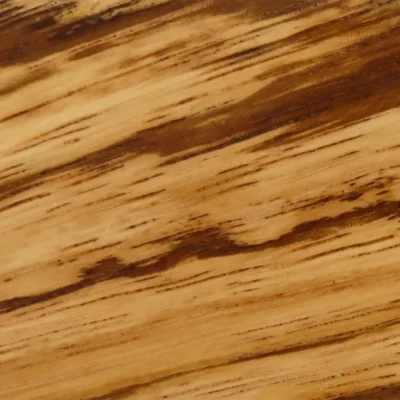
Zebrano Wood: Uses and Characteristics
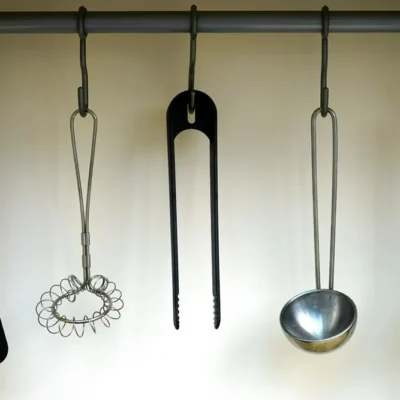
Kitchen Spatulas Complete Guide – Types, Materials, and How to Choose the Best One
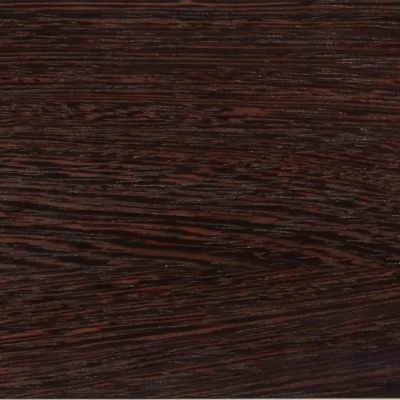
Wenge Wood: Uses and Characteristics

What is an end grain cutting board?
Nuestras tablas de cortar:

UMBRA
serving board
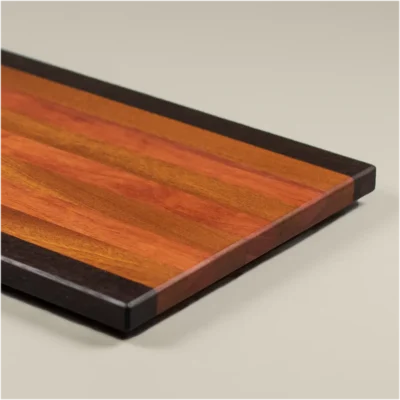
Splendida
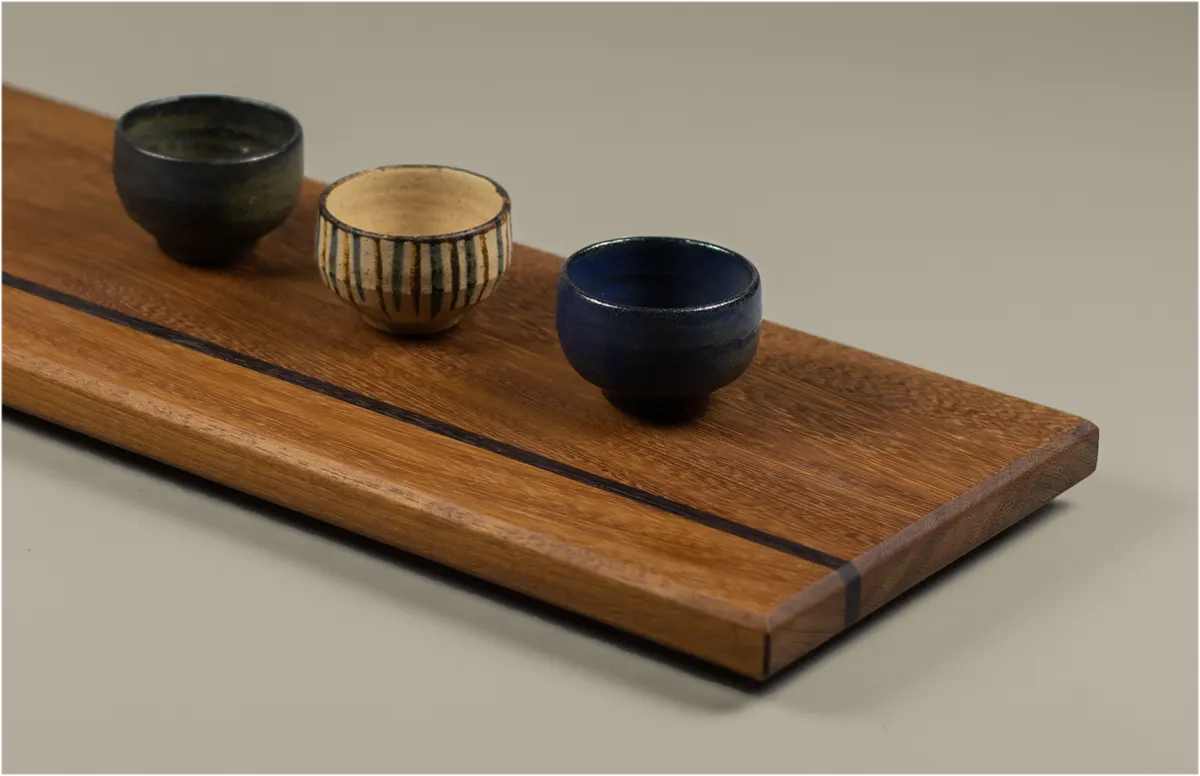
ARGILLA
long charcuterie board
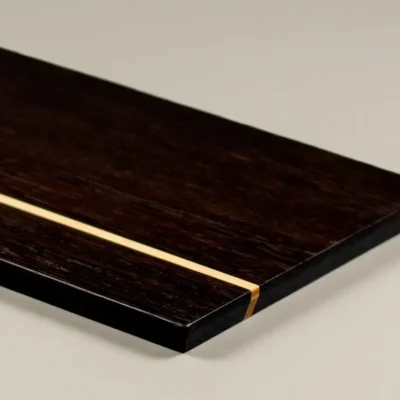
NIGRA
serving board
